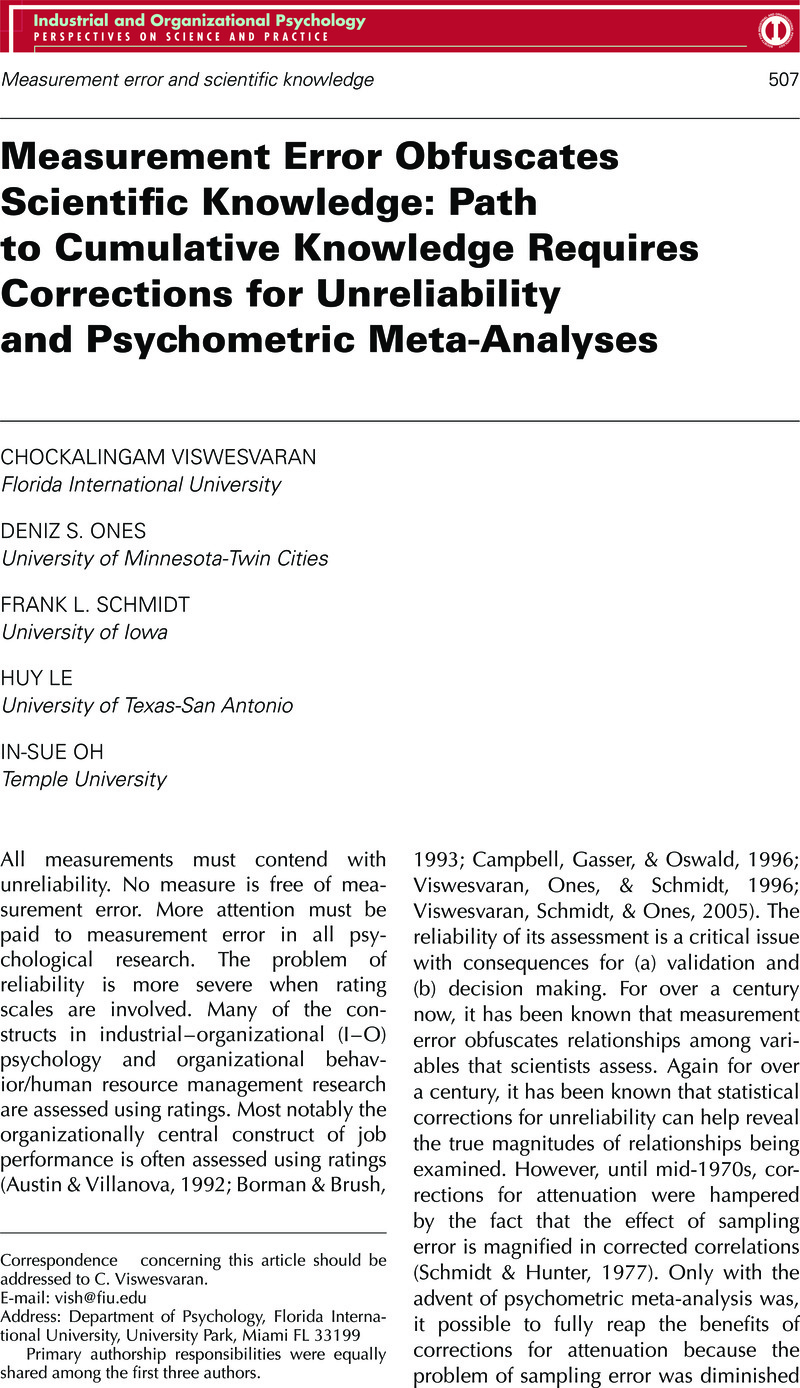Crossref Citations
This article has been cited by the following publications. This list is generated based on data provided by Crossref.
Asendorpf, Jens B.
2016.
Causal Unity of Broader Traits is an Illusion.
European Journal of Personality,
Vol. 30,
Issue. 4,
p.
304.
Salgado, Jesús F.
and
Moscoso, Silvia
2019.
Meta-Analysis of the Validity of General Mental Ability for Five Performance Criteria: Hunter and Hunter (1984) Revisited.
Frontiers in Psychology,
Vol. 10,
Issue. ,
Salgado, Jesús F.
and
Moscoso, Silvia
2019.
Meta-Analysis of Interrater Reliability of Supervisory Performance Ratings: Effects of Appraisal Purpose, Scale Type, and Range Restriction.
Frontiers in Psychology,
Vol. 10,
Issue. ,
Appel, Markus
Marker, Caroline
and
Gnambs, Timo
2020.
Are Social Media Ruining Our Lives? A Review of Meta-Analytic Evidence.
Review of General Psychology,
Vol. 24,
Issue. 1,
p.
60.



